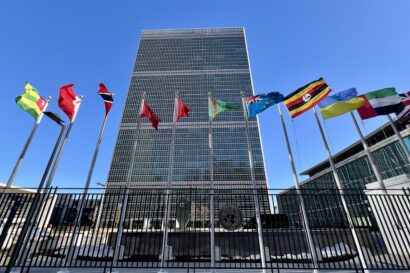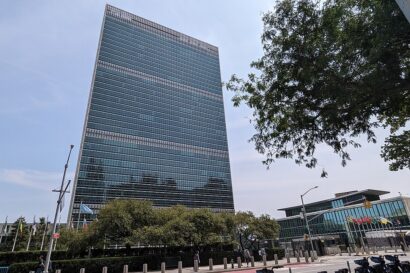Low-income countries with limited taxation capacity and expertise require simple and context-specific methods to combat commodity trade mispricing and related tax abuses. To varying extents, these alternatives involve the use of reference prices and fixed margins, which make them simpler and easier to apply for tax purposes. The methods are “prescriptive” because they are based on rules that prescribe the applicable price ranges, margins, pricing formulas, and profit allocation methods.
Prescriptive pricing methods are often seen as going against established tax, trade, and investment rules. In our recent paper, we argue that there is some flexibility for using prescriptive pricing methods for valuation purposes under international economic law.
Prescriptive approaches to taxation
There are different prescriptive approaches to prevent the undervaluation of commodity exports. The law may require taxpayers (in their tax returns) or tax authorities (in assessing taxpayers’ returns) to assess the value of commodity transfers between related parties based on publicly quoted prices (the so-called sixth method in transfer pricing law). Another approach is administered pricing, where the law directly determines the value of transactions for tax purposes. Furthermore, mandatory contract terms may be established by the law to frame price terms in contracts.
Other prescriptive methods introduce bright-line restrictions on deductible taxpayer costs. The law may, for example, prohibit the deduction of mark-ups on costs in intra-group transactions. Interest limitation rules may limit deductible interests to a specified percentage of the company’s earnings. Withholding taxes on outbound payments is another method used to offset the loss of taxable income resulting from excessive payments to foreign affiliates.
Some approaches aim to simplify profit allocation rather than transaction valuation. In this direction are proposals for local subsidiaries to be assigned a profit margin in proportion to that of the multinational enterprise (MNE) as a whole. More complex fractional apportionment techniques would assign a portion of the MNE’s worldwide earnings to the local subsidiary or establishment, considering factors such as the number of employees, asset size, and sales.
Are these approaches legal?
It is natural to have concerns about the legal freedom that countries have in implementing the simplified and alternative methods proposed. Can developing nations unilaterally apply prescriptive pricing methods while complying with their international obligations under tax treaties, as well as international trade and investment law?
The answer is not straightforward and depends on the specific terms of any relevant treaty obligations alongside existing contractual and regulatory arrangements. However, it would be incorrect to claim that these methods are universally illegal under international economic law.
Trade law
International trade law prohibits using arbitrary or fictitious values for customs valuation purposes, as specified in the WTO Customs Valuation Agreement. Similarly, when assessing the tax value of transactions between related parties, the WTO Agreement on Subsidies and Countervailing Measures requires the use of “arm’s length” prices. Prescriptive methods that are based on market parameters instead of artificial values can be construed as complying with these requirements if flexibly interpreted.
Tax law
When it comes to tax law, prescriptive methods go against the “arm’s length” requirement specified in the OECD Transfer Pricing Guidelines (TPGs). However, the OECD TPGs are not legally binding unless they are incorporated into national law or tax treaties. Additionally, despite being considered a global standard, they are not truly global, both in their development and implementation.
Tax treaties
Turning to tax treaties, there is room for the use of prescriptive pricing methods under tax treaties based on UN and pre-2010 OECD models. These models do not incorporate the OECD TPGs into treaty language, and they do allow some flexibility in considering prescriptive methods as a means of assessing “arm’s length” prices when grounded within market parameters. However, obstacles to implementing prescriptive approaches may arise from the tendency of tax administrations and courts to follow the OECD Commentaries when interpreting and applying bilateral tax treaties based on the OECD Model. Nonetheless, adherence to the OECD Commentaries in interpreting tax treaties is a matter of practice, and the legal standing of the OECD Commentaries in treaty interpretation is a contested issue in doctrine.
Investment law
When it comes to investment law, prescriptive methods could require changes to the regulatory environment in force when the investment was made. This may trigger compensation claims under standards of protection and stabilization clauses that protect investors from changes in the law. The relevant case law has generated contradictory interpretations of the matter. Some tribunals have adopted a strict approach favouring the investor, while others have concluded that the host state has the right to make reasonable changes in the public interest. Several legal arguments can be mobilized as a defence under international investment law based, for example, on allegations of wrongdoing by the investor or the assessment of overall public interests.
Reclaiming policy space
Prescriptive taxation methods offer viable solutions for addressing tax abuse in countries with limited administrative resources. It is important to note that these methods do not violate international economic laws by default. On the contrary, they could be legally applied within the framework of such laws, depending on the specific terms of the applicable investment treaty and any relevant contractual or legislative arrangement in place.
It’s important to recognize and defend this regulatory space and expand its boundaries as much as possible, and to resist instrumental uses of legal discourse that support the status quo and discredit alternatives.


